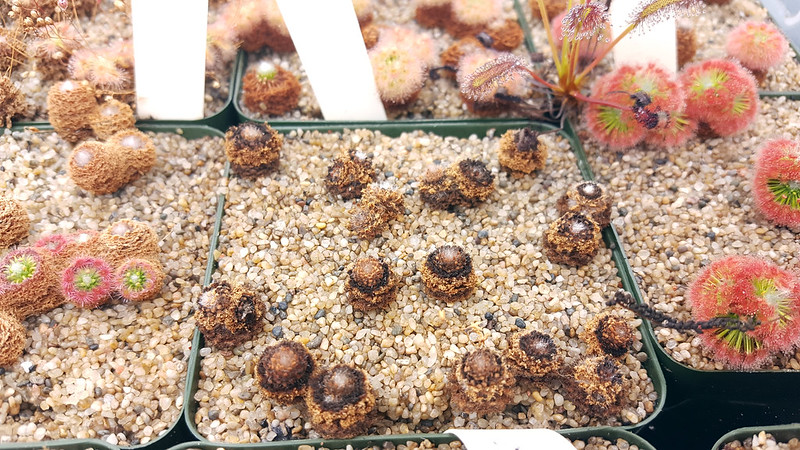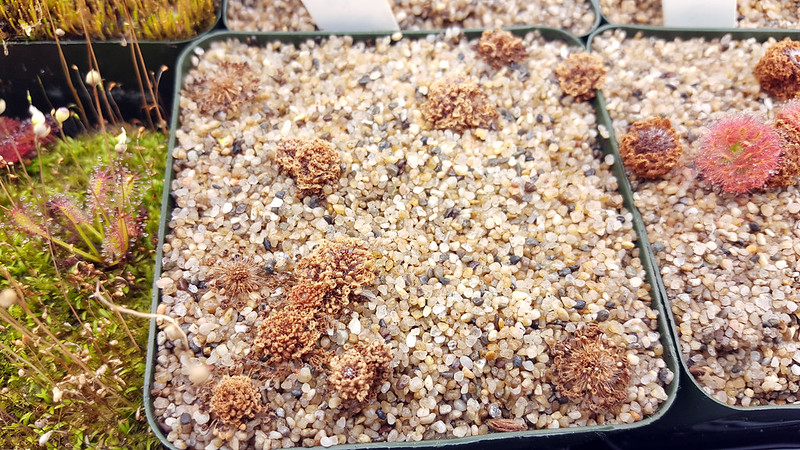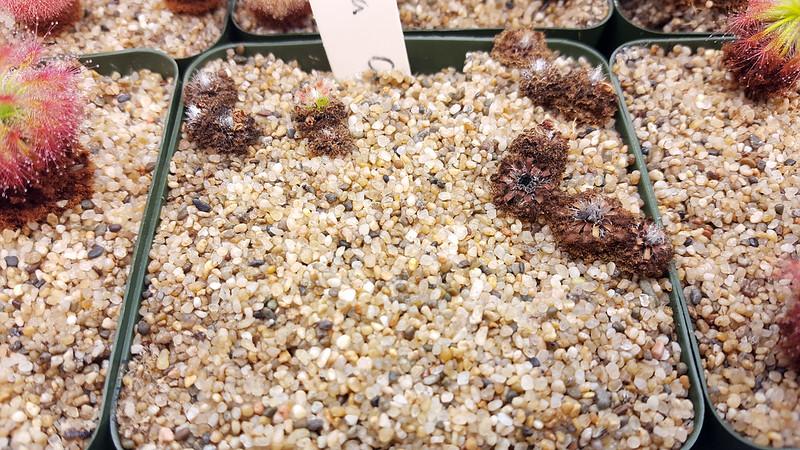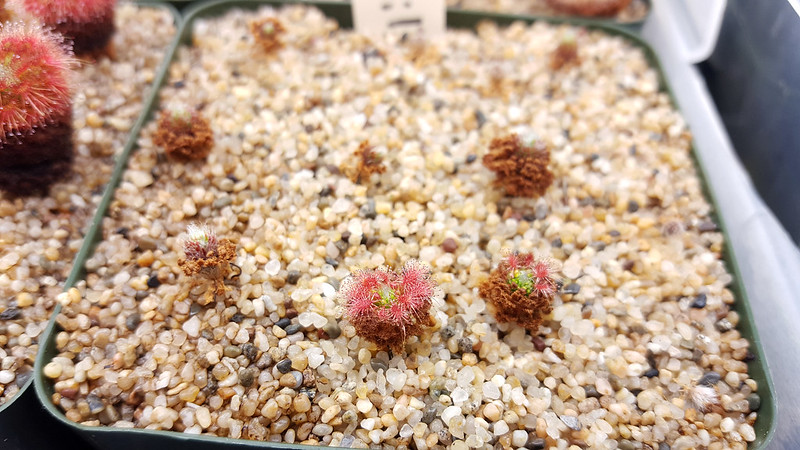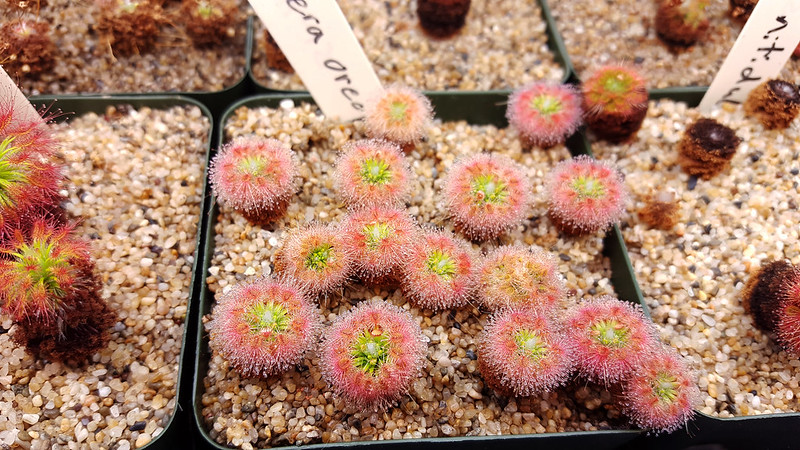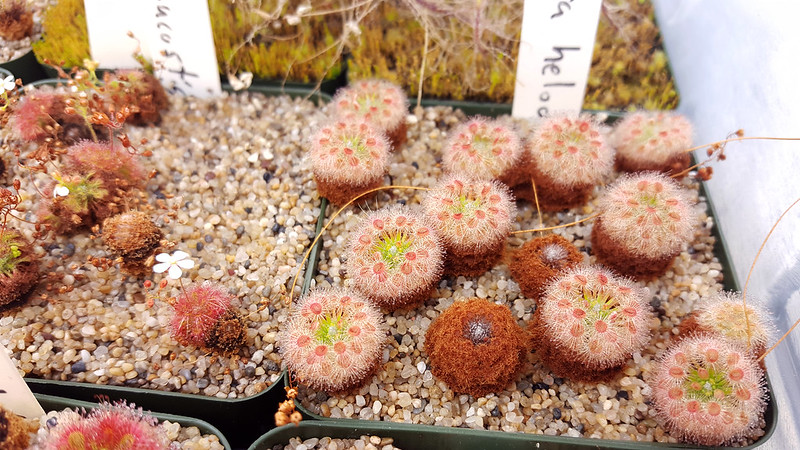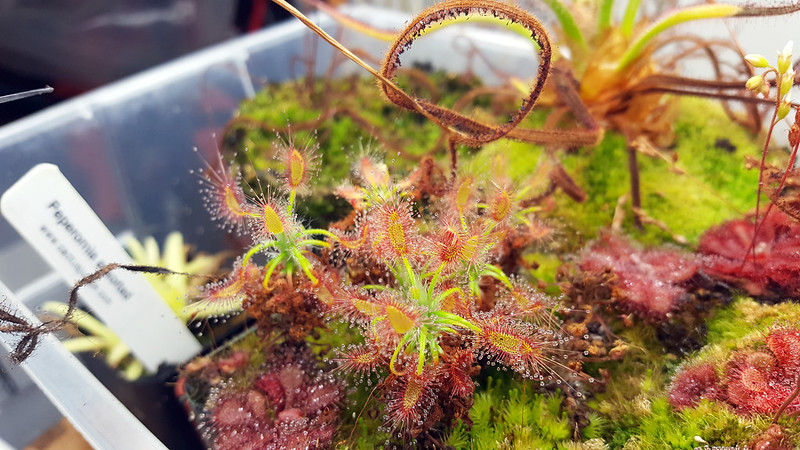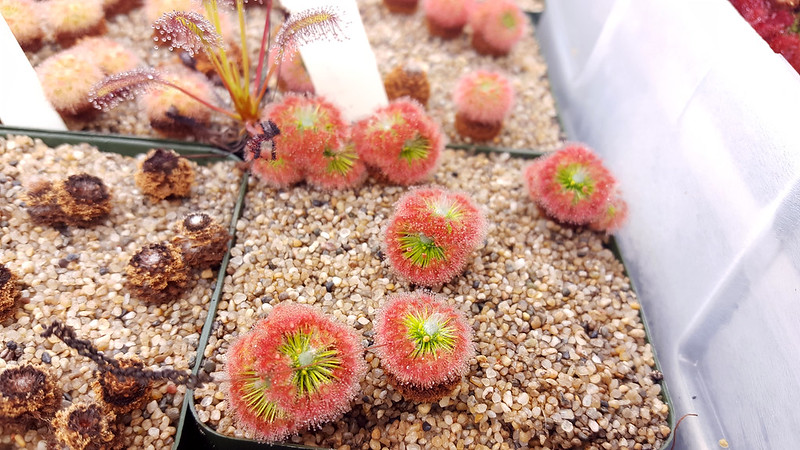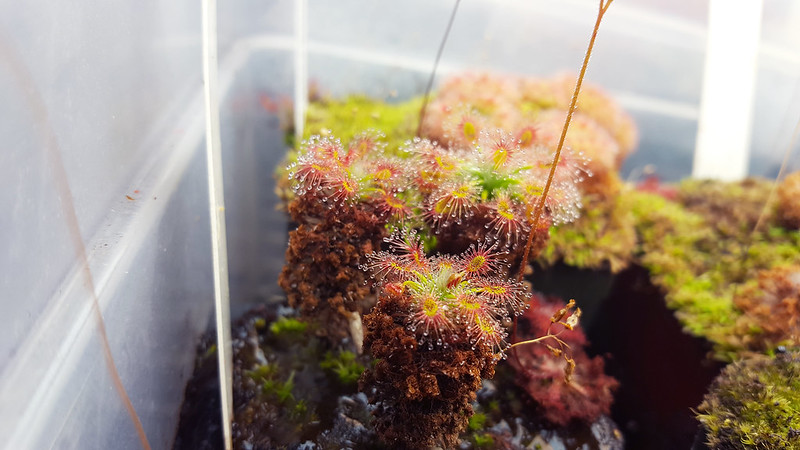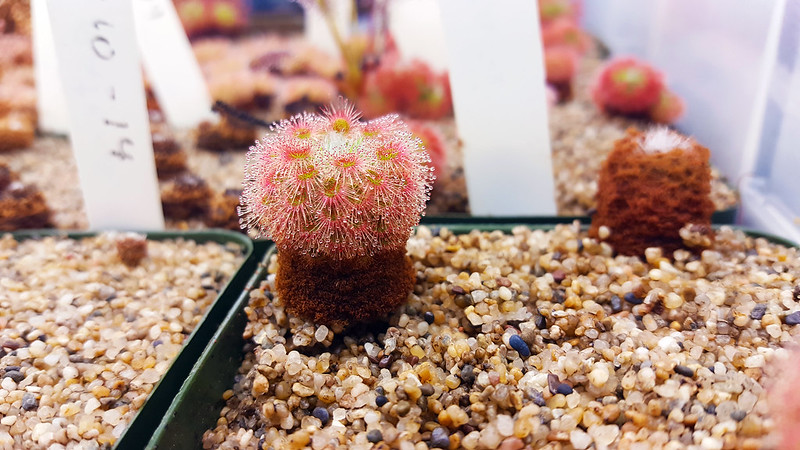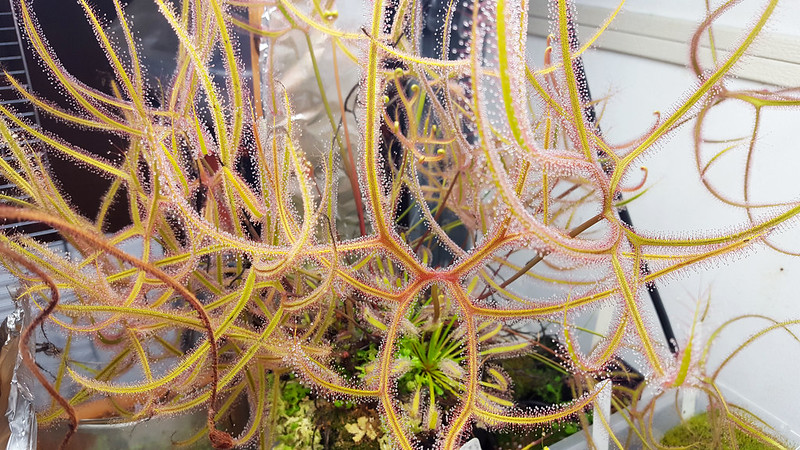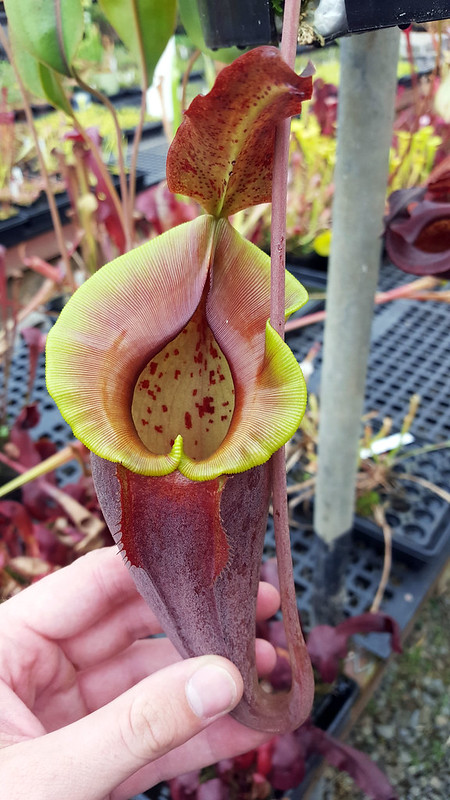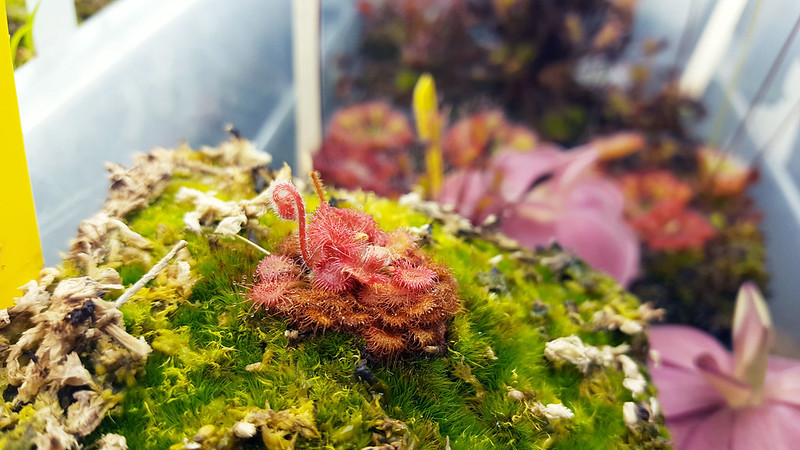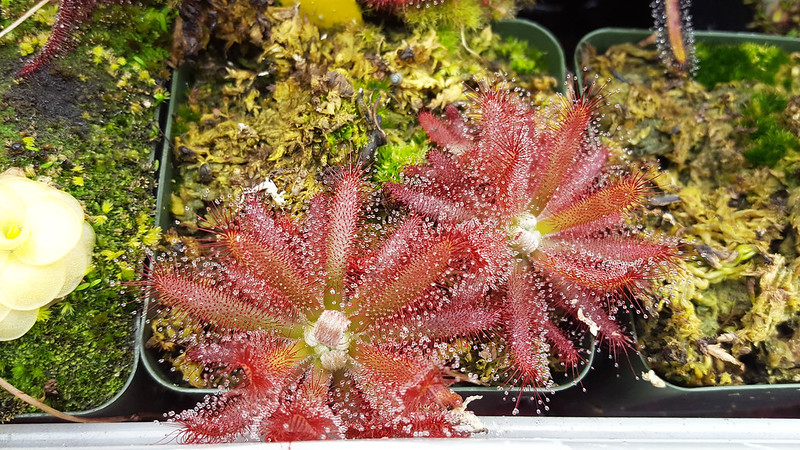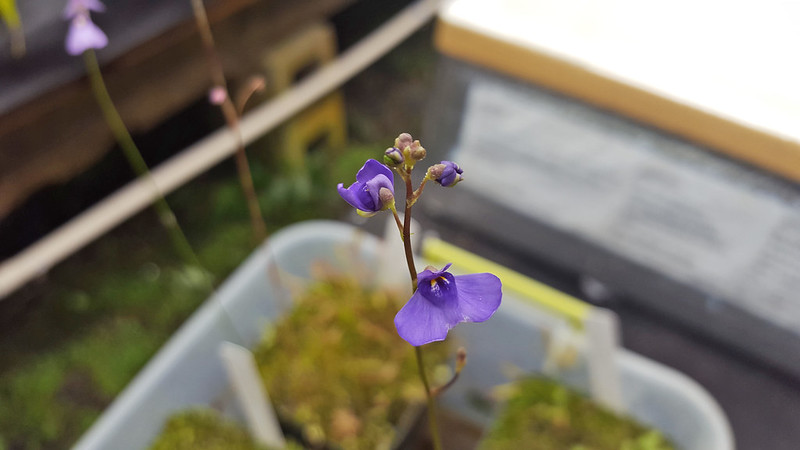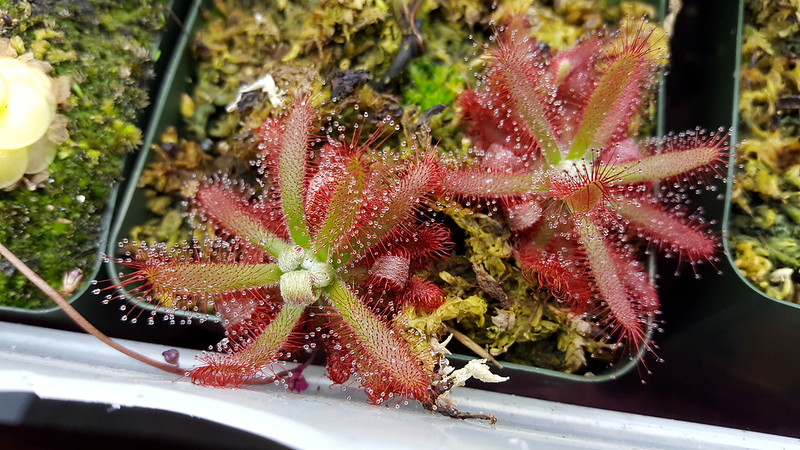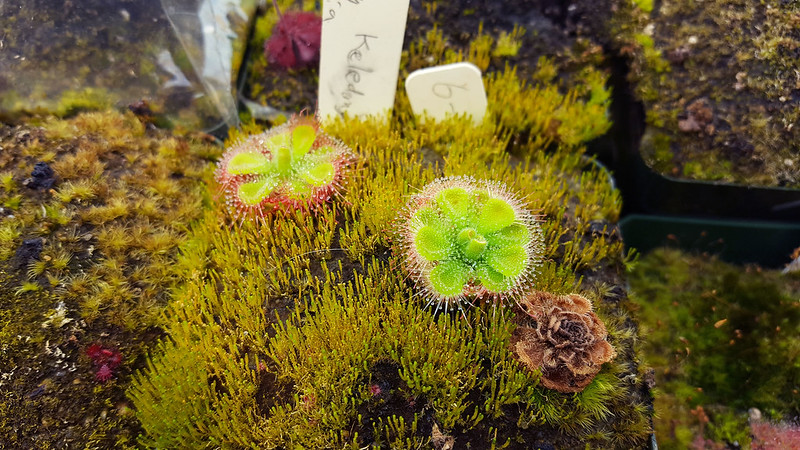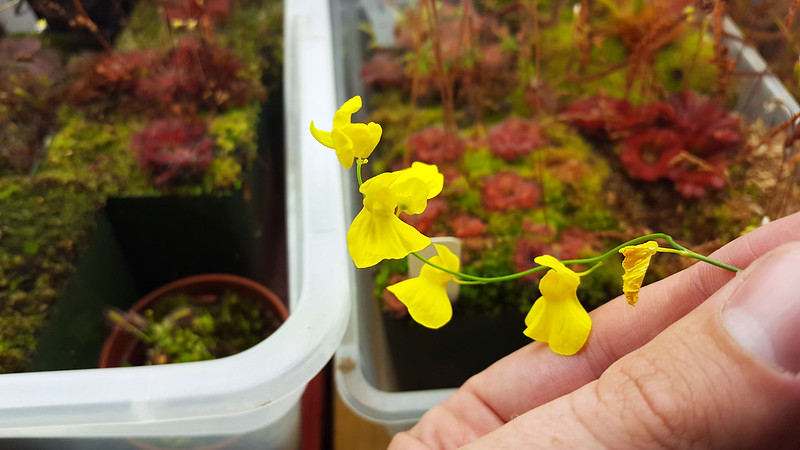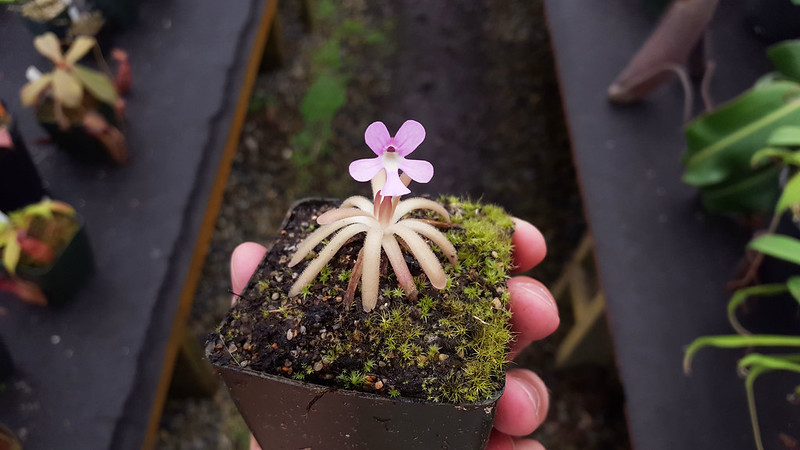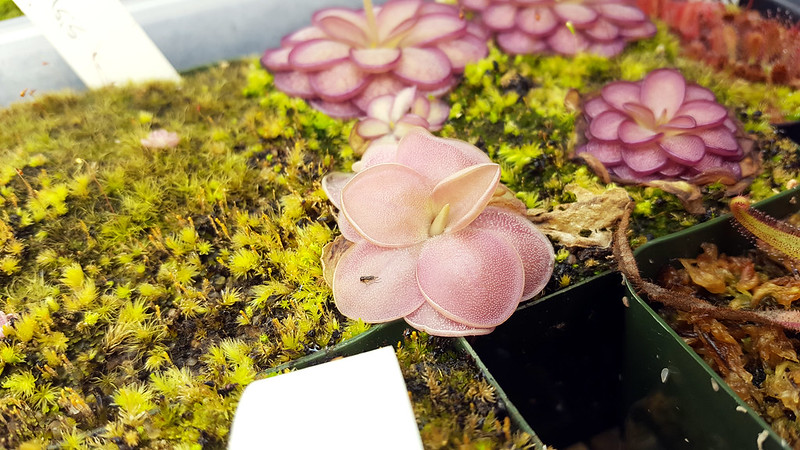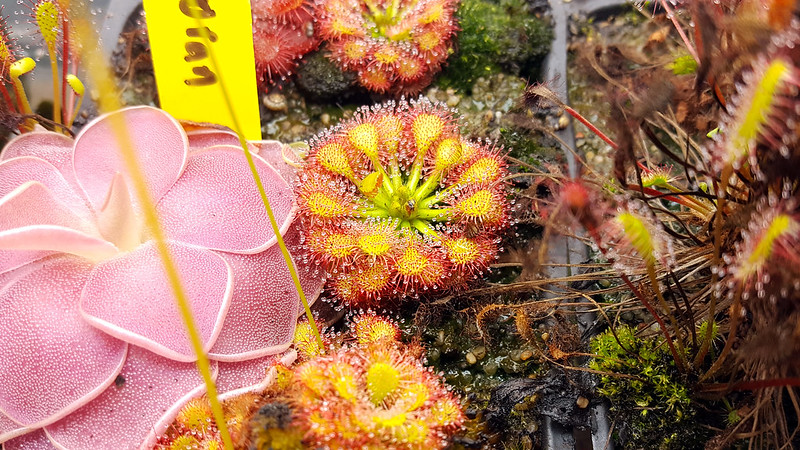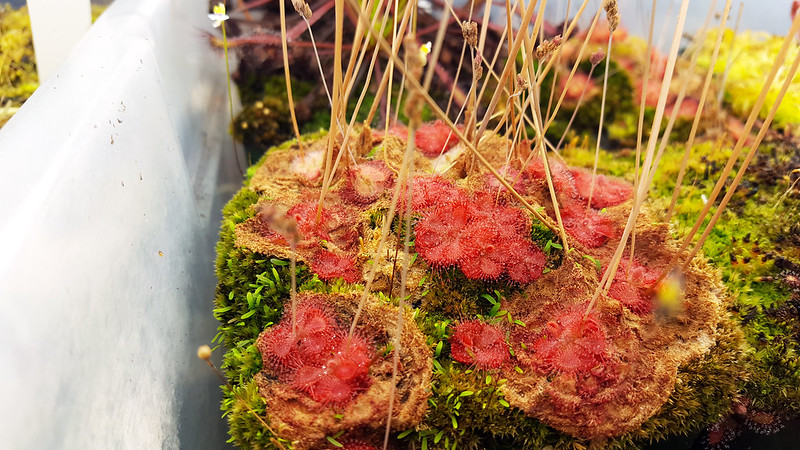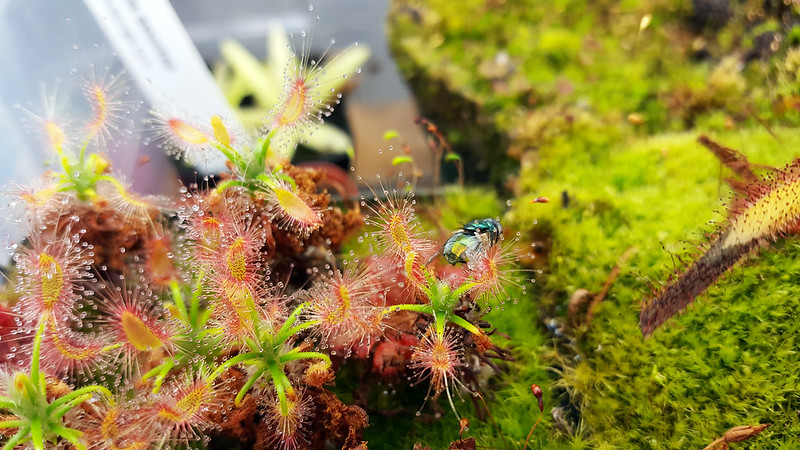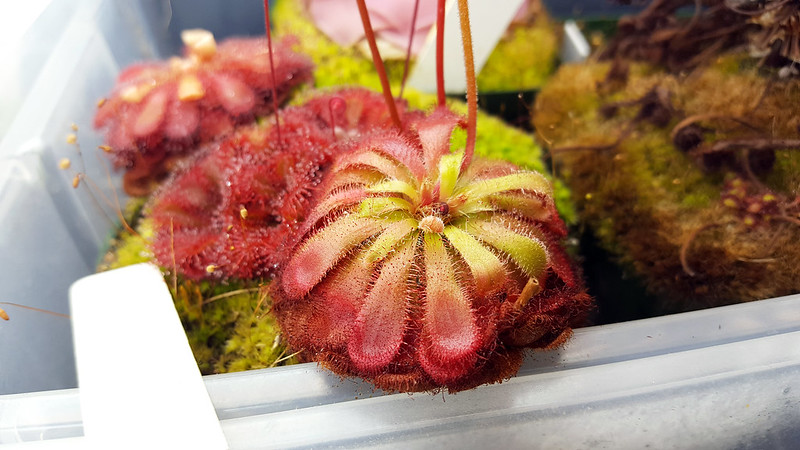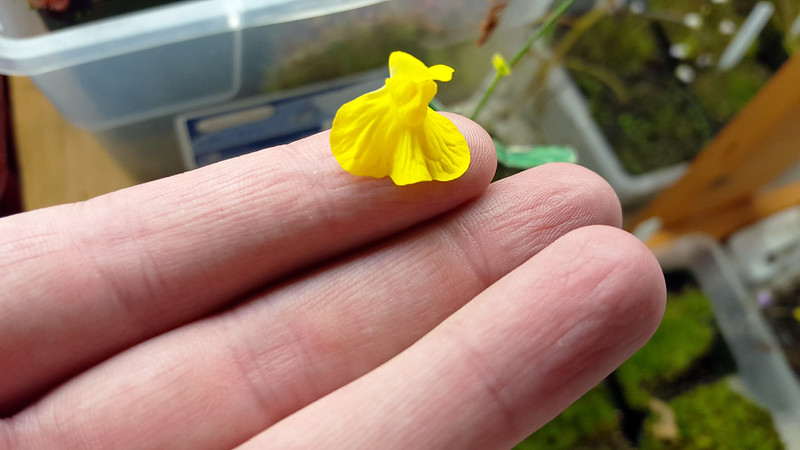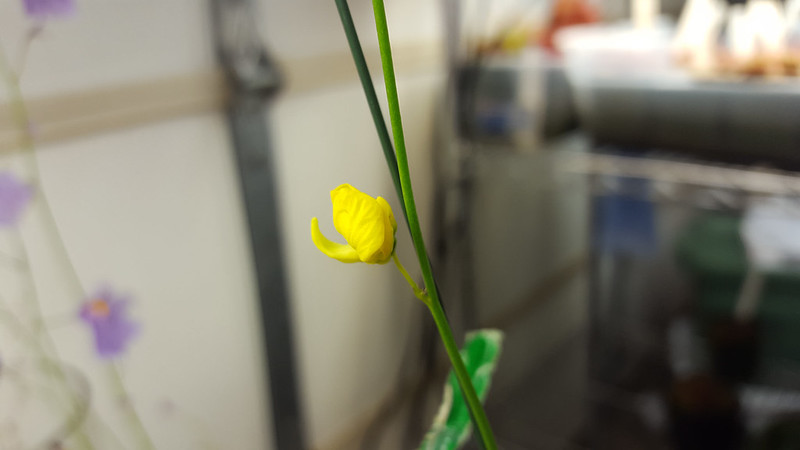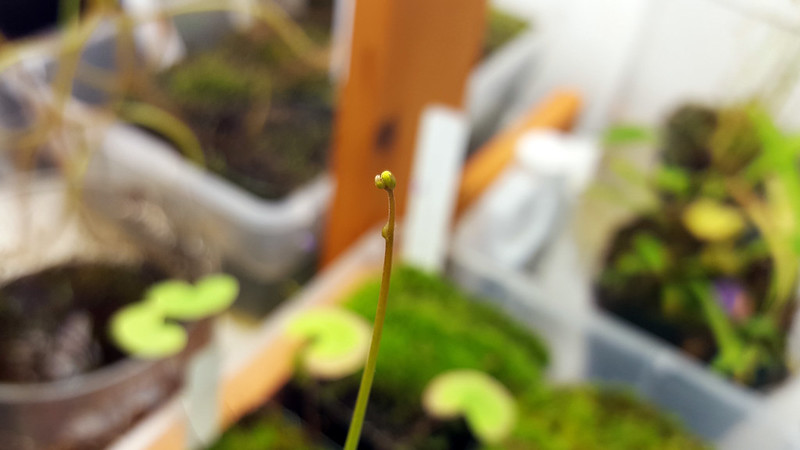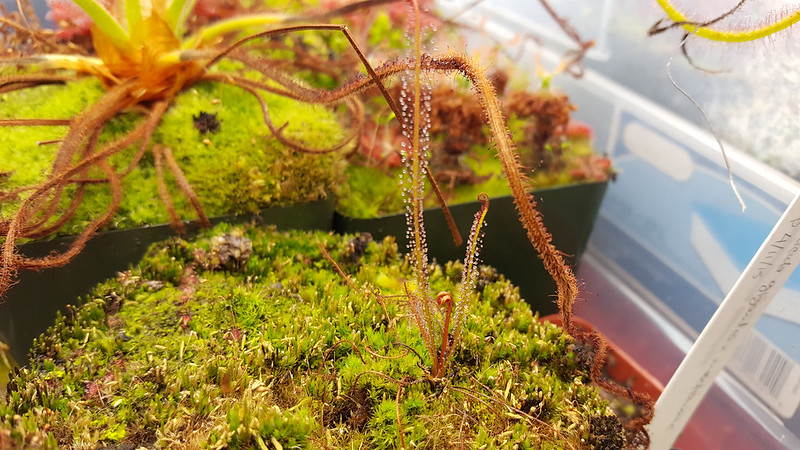So, when I'm trying to talk people into growing carnivorous plants, I usually tell them something like this:
Carnivorous plants aren't very hard to grow. The things that kill them kill them right away. But if you spend just a little time setting up a system for them to grow in, they need almost no maintenance at all.
It's really fortunate for me lately that that is true, since I've not been giving my plants much maintenance/attention in the last couple weeks, and by god, they keep growing. Take
Utricularia praelonga. Since I
all-too-recently threatened it, it's opened not one, but three flowers.
 |
| Look at this flower stalk! It's getting quite tall. |
Wowee! This is really quite cool. They're like larger, somewhat more interesting
Utricularia subulata flowers. Here's a closeup:
 |
| A lovely flower after all. |
The ruffles on the "labium" (it's not a labium, but I don't know how else to refer to the bottom petal on a non-orchid zygomorphic flower) are really cool, and the whole flower faces upward in a neat way. Quite large too, over a centimeter in diameter. I'm very proud of this plant!
I've also got a nice little bloom spray on my
Utricularia babui.
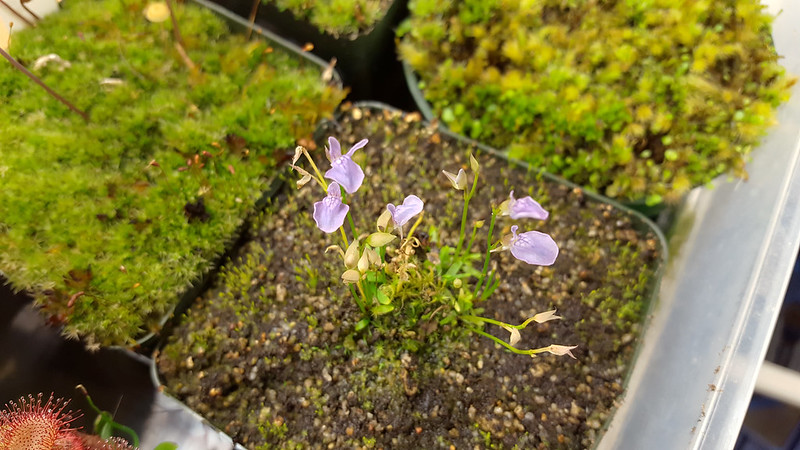 |
| I like the shape a lot, it's bulbous in the middle. |
I'd thought that this plant was supposed to be bluish, but my
Utricularia gramnifolia is much more blue, and these are distinctly purple. Therefore, either my idea was wrong (possible), one or both of the aforementioned plants are mislabeled (sadly common), or the taxonomy and description of these taxa are a mess and need to be sorted out (very likely). In any case, I quite like this plant – I rarely see this many flower stalks on fresh utric plug. Usually they wait until the pot has been more widely colonized to bloom in force.
My
Pinguicula rotundiflora ×
hemiephiphytica has a flower bud.
 |
| I love new ping flowers. |
I've heard a bit of back-and-forth about whether this hybrid actually exists, or is just a labeling mistake. I think this flower will help me make a determination for myself at least. Both of the parent species have pretty distinctive flowers, and I feel like I should be able to tell if this plant is of their ilk or not. I guess we'll see in time!
Oh yeah, I started some
Drosera esmereldae seeds.
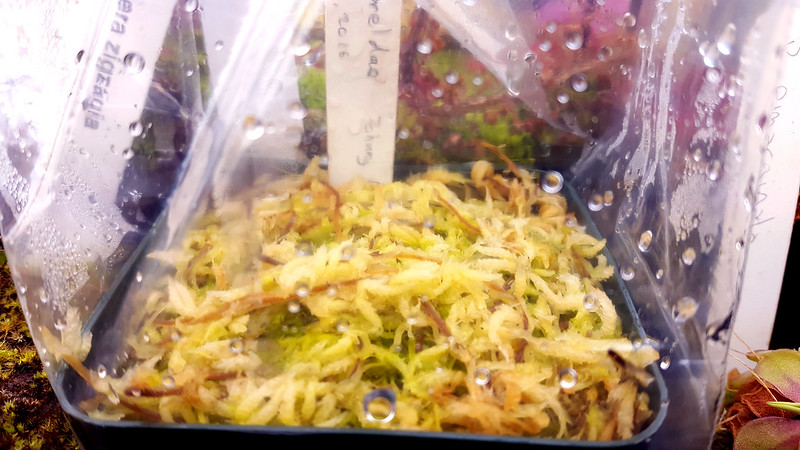 |
| Just some moss you know. |
There's not actually anything to look at, but it's nice to have the blog here as a record of propagation attempts. I hope these take – this is a species I've wanted for a while.
Here's a problem: I've got three species in this pot, which I knew at the time was a bad idea.
 |
| This is what I get for not preparing enough soil. |
The "dead" plant is
Drosera zigzagia, which I should take out of the tray for its dormancy. The ping up front is a nice
Pinguicula moranensis start that I can just move to another pot. The problem is those two nubs on the left. Those are
Drosera occidentalis plants that I accidentally broke from their roots while harvesting gemmae. They're 100% alive (just dormant), which gives the lie to the idea that pygmies can't handle root damage. The problem is that I don't want to make this pot go dry and risk killing them now. I might just dig out that section of pot and replant it. We'll see.
Speaking of pygmies, my
Drosera grievei seems to not have reverted from its crestate state.
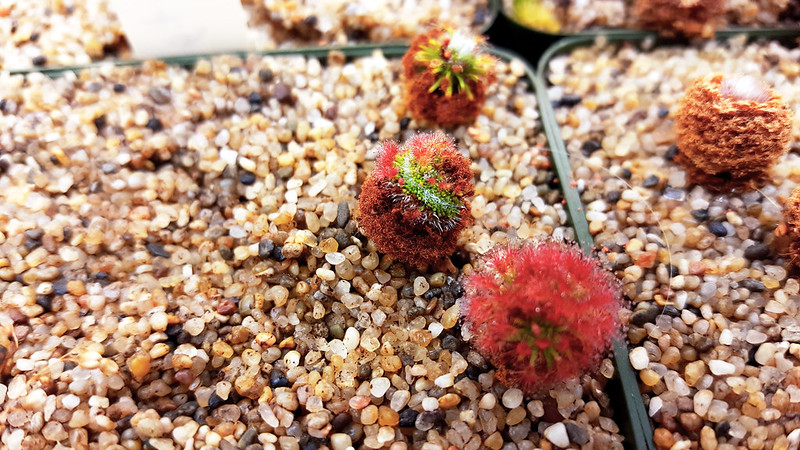 |
| Cresting forms are always fun. |
That's pretty cool really. None of the gemmae from this plant made crestate plants, but that's okay, I like this one. My pygmies are looking pretty so-so this year though (I should make a post about that). I'll have to make fresh pots this year.
Finally, to end on a pretty note, my
Drosera capensis wide-leaf form is really looking nice.
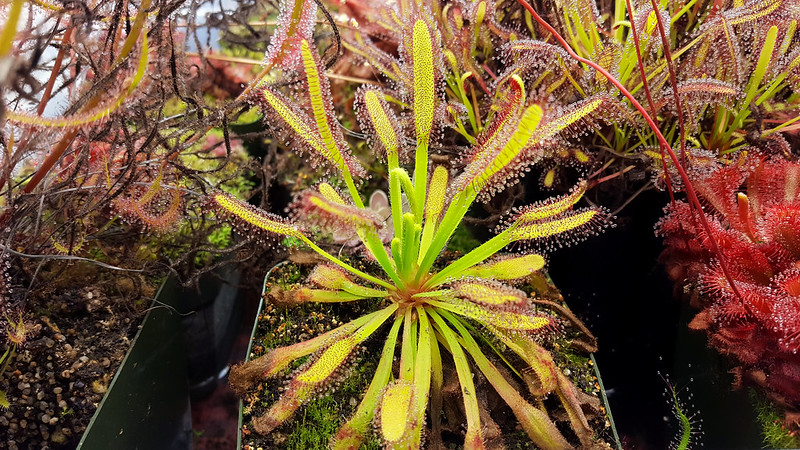 |
| This is just a really good plant. |
So far I'm really pleased with this acquisition. The real question will be if the seed offspring maintain the wide leaves. If not, I'm still happy with this one at least. So dewy!
